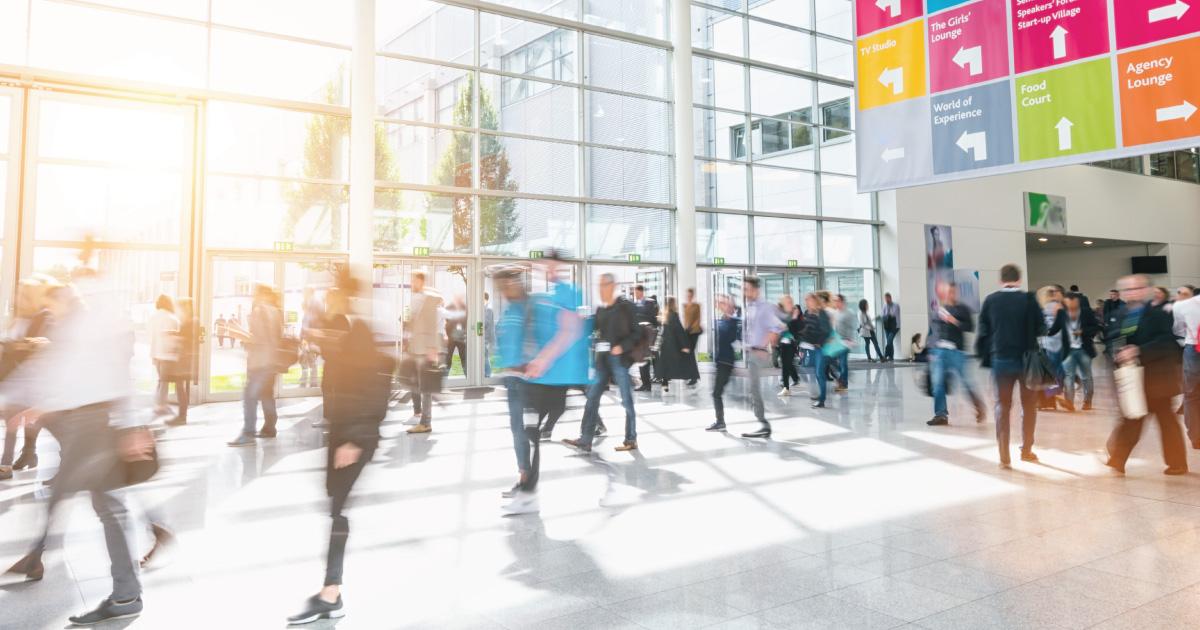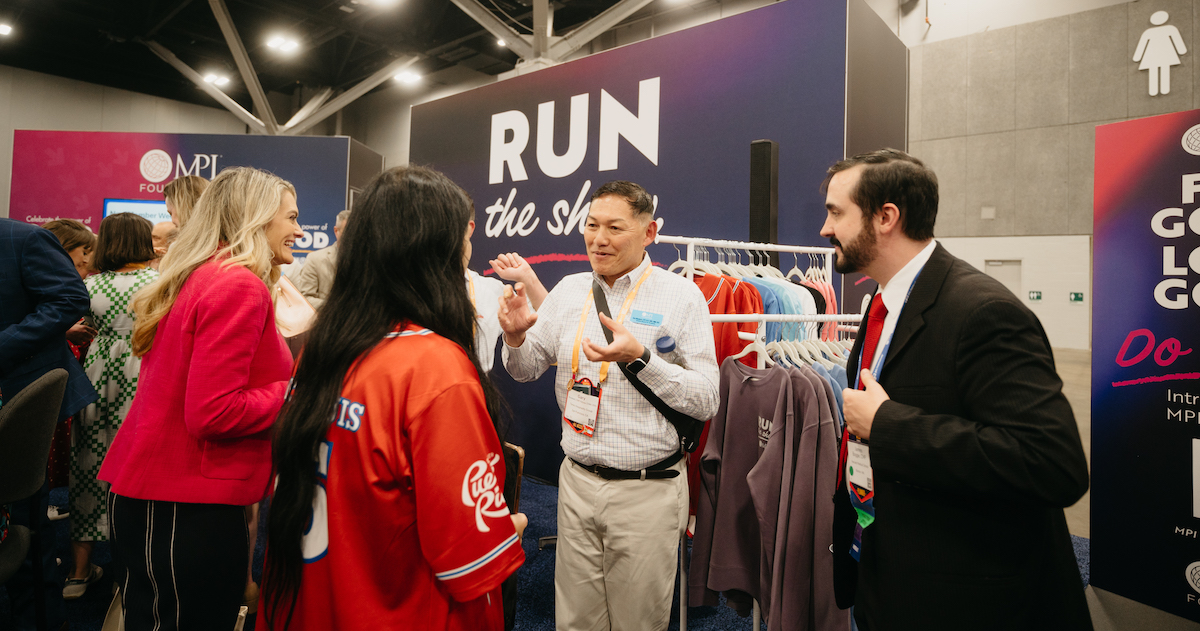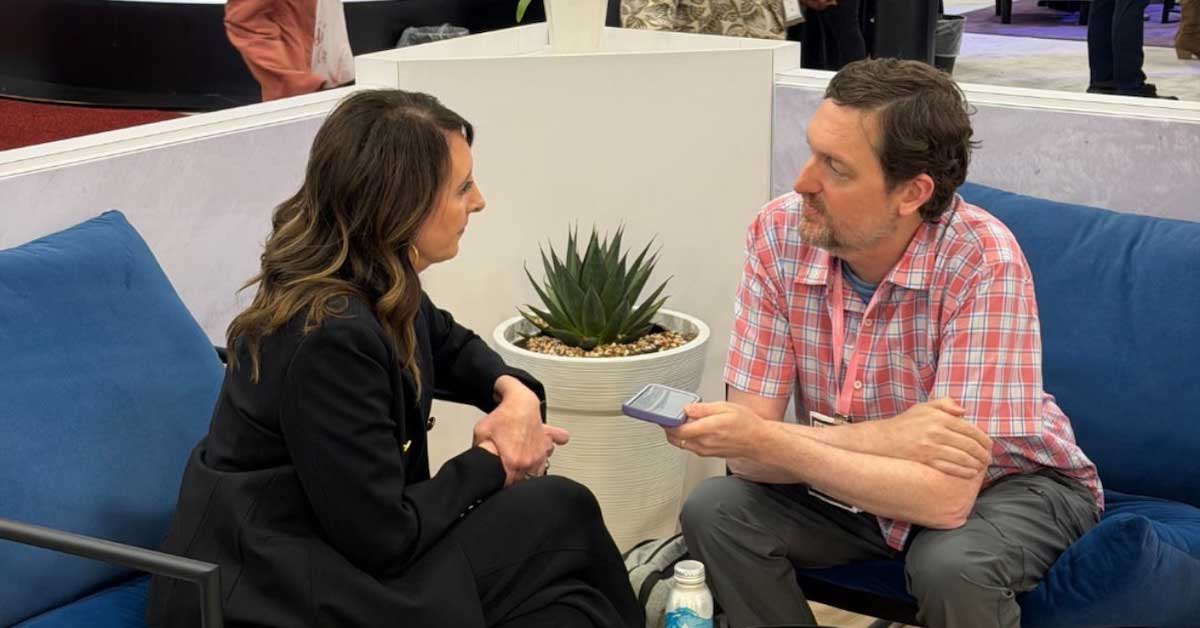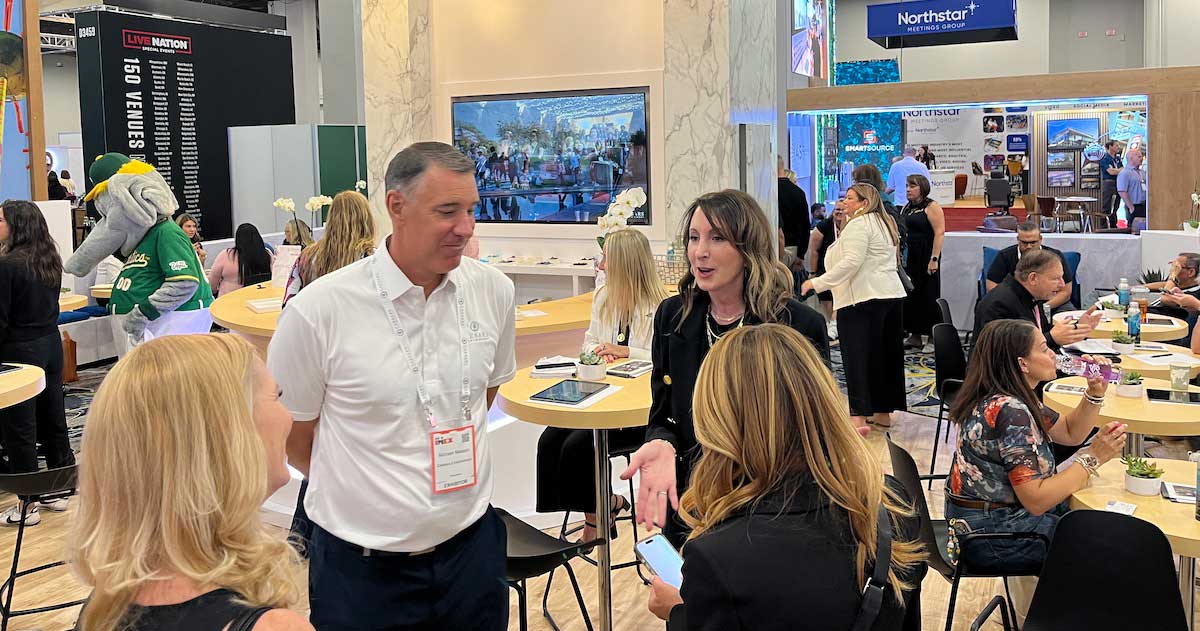A special section brought to you by the International Association of Exhibitions & Events

Technology is now an integral part of executing an event. Organizers large and small are feeling the pinch and pull of digital transformation and having to be smarter about selecting, implementing and evaluating solutions. Fortunately, as the ecosystem of platforms and apps emerges, new strategies for dealing with the volume of solutions, the mountain of data and the surplus of new responsibilities are surfacing, too. Help is out there.
Coping with Pressure
The heat is on for event organizers to adopt technologies whether they make sense for the organization or not.
“I think there is a disproportionate amount of attention on things that are exciting and new, but [organizers] don’t really know what to do with them yet and they’re struggling to find some value,” says James Johnson-Miller, director of event technology at IMEX Group.
He is a strong proponent of making sure there’s a business case for implementing a new technology before getting caught up in a cycle of “innovating for the sake of innovation.”
It’s not that Johnson-Miller is opposed to novel approaches for automating a process, enhancing the participant experience or delivering content (augmented reality comes to mind). He prefers to take a more practical approach by selecting technologies that add to the mission and objectives of the event. At IMEX, he subjects new solutions to a kind of “quantitative financial” litmus test.
“We write our requirements down, we do the cost-benefit analysis and prepare an RFP,” he says. “It’s very standard.”
There is, arguably, more of a burden on an organization like IMEX (which serves the incentives and event planner community) to put new technologies in front of attendees so they can experience them relatively risk-free. Johnson-Miller refers to his organization’s approach as the IMEX Lab.
“We let people at the show experience technology and be hands-on with it to drive confidence more broadly in [a specific solution], but also to be more inclined to bring it into their events,” he says, noting that’s it’s been a successful strategy and one in which IMEX continues to invest.
Putting new technology in front of customers has its challenges though. Some technologies work well technically, but present unanticipated “human challenges,” Johnson-Miller says. Plus, “the same technology in two different people’s hands may deliver two different outcomes—one successful and the other not so,” he explains. Because environmental challenges—such as the availability of Wi-Fi or access to cellular networks—can impact the user experience and how the technology is perceived, organizers also have to look beyond the solution itself in many cases.
Integration and Data
The International Association of Exhibitions and Events (IAEE) discovers new platforms for its events in its capacity as an “incubator” for emerging technology. It pursues partnerships with technology companies from within and outside of the event industry to help execute its annual Expo! Expo! meeting and exhibition. It also designs conference programming—a technology startup pavilion, a pitch competition (with venture capital firm representatives as judges), education tracks, exhibit space and an online tech guide—to give visibility to event technology firms.
One of the biggest challenges for IAEE as a purveyor and promoter of event technology is integration.
“We take pride in folding a lot of different technologies into our operation—including our member database—to make our member and event experiences better, but integration is the toughest part of mixing all of these technologies,” says Scott Craighead, CEM, vice president of exhibitions and events at IAEE.
In fact, the degree of difficulty associated with integrating new technologies “impacts our technology selections,” he adds.
IAEE has a vetting process to determine whether a proposed solution is compatible with other new technology providers, as well as existing platforms—especially the registration company. Craighead calls upon the association’s IT department to review the technical requirements of the integration and the provider’s willingness and openness to integrate with other solutions.
“It’s not a two-way relationship anymore with the organizer and the solution provider as the only entities doing business together,” he says. “[A poor integration] impacts every other partner.”
The right mix of event technologies provides event organizers with an abundance of data to grow the event, improve participant experiences and enrich programming. IAEE recently began working with Bear Analytics to analyze five years of trade show data.
“Bear was able to identify patterns, opportunities and weaknesses and tell us what’s important and what’s not because [data] can be very intimidating,” Craighead says.
IAEE also relies on reporting that comes from the Center for Exhibition Industry Research (CEIR) to validate its event data and technology decision-making.
New Pathways
Not all technology discoveries come from contact with the solution providers. Existing partners—registration companies and official services contractors, for example—are bringing new solutions to the attention of event producers and many organizers welcome them.
“When it’s coming from someone we already work with, there’s a level of trust there,” says Lindsey Fuller, vice president, Satellite Group at Access Intelligence. “They know our business. They understand our audience and the way we operate.”
Recently, Fuller’s business services department was using reporting tool Tableau to run reports during and after the show.
“When we were doing post-show analysis, it was fine to take the time to send them the [registration] data and get the reports back. But when we were in the middle of a campaign or if the numbers weren’t where we needed them to be and we had to investigate, we had to do everything by hand,” she says. “Sending it off to go into Tableau could be a three-to-four-day wait and we would lose the opportunity to fix the problem or turn on a dime.”
Over time, Fuller shared her reporting challenges with Convention Data Services (CDS), with whom she partners for registration. When CDS launched its Data Sense dashboard, a reporting and data analysis platform that combines data sources and delivers year-over-year comparisons and real-time reporting, they contacted her. Fuller recognized the advantages of Data Sense compared to Tableau: no need to download registration data and feed it into another platform, no integration required, no waiting for reports.
“We didn’t have to do any manual work from my team’s perspective,” she says.
The event team at Atlassian, an enterprise software company that develops products for software developers, project managers and content managers, is actively involved in selecting technologies to add to their event-technology stack. However, they don’t do all the discovery and onboarding on their own.
“We partner with our event logistics agency, Freeman, and their team brings quite a bit of subject matter expertise on event tech, from helping to develop the RFP and vetting new solutions to optimize our technology,” explains Amy Walter, manager, event strategy at Atlassian.
Looking to more traditional event-industry suppliers for technology help has its perks. When the technology falls within the partner’s area of expertise, it’s an opportunity for organizers to get good, free advice, says J.D. Hawley, chief technology officer at CDS.
“Whether it’s a registration company, housing provider or any other partner, we are all trying to help customers drive innovation as opposed to being led by industry trends,” he says. “We are now at the point, I think, where we’re pushing our customers to look at new ideas and innovations. It makes us strategic partners as opposed to just vendors.”
Platforms and Federations
Platform solutions—the “Swiss Army knives” of event technology—provide organizers with some advantages. Many manage the full range of event management tasks from registration and onsite mobile applications to booth space selection, matchmaking and post-event evaluations. Platforms (versus standalone software solutions) help planners avoid having to integrate software and all updates are synchronized across the entire platform. Plus, even if the planner has unique requirements that the platform can’t address, most platforms allow integrations with third-party solutions.
Platforms don’t address the needs of all organizations. Some firms, such as Atlassian, prefer a stack from which they can select and configure different standalone software products based on needs.
“For our smaller scale events, we often pull back the technology integrated into the event,” Walter says. “We assess, based on the scope, budget and size of the program, what technology makes sense to introduce for each event. It’s not always a one-technology-serves-all-events situation, and we want to make sure that we’re positioning each piece of technology in our stack to be purposeful in the event that we use it for.”
Atlassian has also been successful with a “federated” approach to technologies in which multiple best-of-breed solutions are, by design, integrated and share data like a platform.
“We’re in a great position right now as we’ve been partnering with the Event Tech Tribe solutions,” Walter says. “The turnkey automation of transporting and communicating data back and forth between their technologies is critical. Otherwise, we would be duplicating and replicating work rather than using the technology to make our lives more efficient and run our events more smoothly.”
Structuring Teams
As event technology plays a more significant role in events, organizers have begun thinking about better ways to manage event technology. Hawley with CDS underscores the value of putting aside time and resources for the task.
“When you see the technology, you see a demo, you get an email or an ad, or somebody says, ‘Oh hey, come and check this out,’ that’s a reactive way to deal with technical innovation,” he says. “If you have a more formal way of processing that input and deciding whether the technology applies to your business, you can achieve better outcomes.”
To reduce the points of entry vendors can take into the organization and make the vetting process more consistent across multiple event groups, Access Intelligence appoints several vice presidents of digital who manage the first touch with technology providers. Operating apart from corporate management, they are “more knowledgeable about what our specific needs are, what our markets look for and what our staff is looking for,” Fuller explains. Once the VPs evaluate the solutions, “the show director or brand manager makes the decision and gets the contract going,” she adds.
Atlassian is in the process of hiring an event technologist. Walter describes the role as someone dedicated to maintaining event technology—including registration and the website—and “managing our integrations to be sure the tools we’re using and the data we’re collecting is top-notch.” The technologist would oversee the vendor management and review process. He or she would be open to experimentation and able to analyze data to determine “how we can optimize our solutions and provide recommendations if we need to make changes.”
Technology is supposed to automate, streamline and enhance events, but it also makes planning more complicated. Every new solution causes a ripple effect across an organization’s budget, staff and databases. Nevertheless, event organizers can take specific steps to build technology stacks that work for them and organizations that are ready to innovate. Until there’s an app for that, though, they’re going to have to do it strategically and collaboratively.







